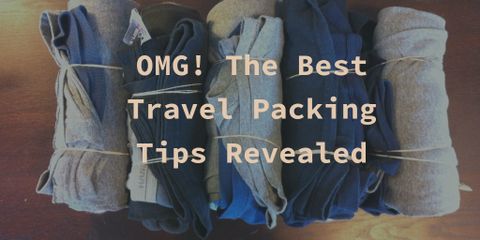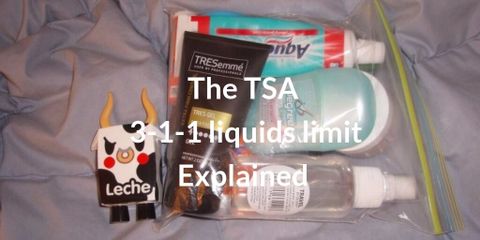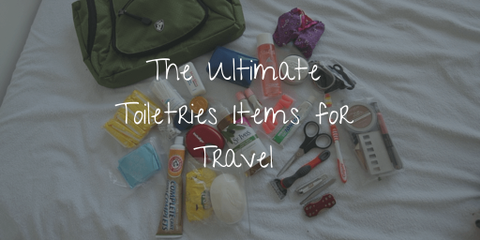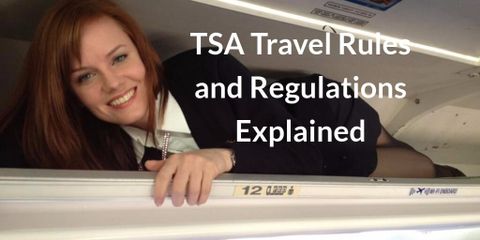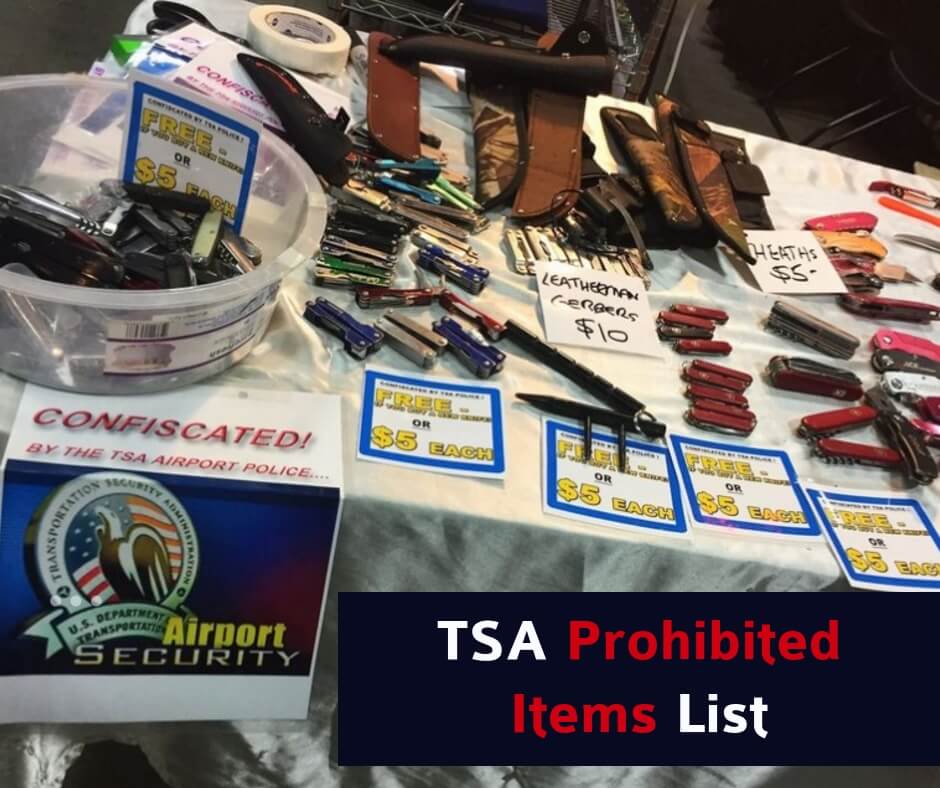
Trouble Free Flying - TSA Prohibited Items on Planes
Have you checked into an airport and had the official rattle off a list of questions to you?
- Did you pack your bags yourself?
- Are you carrying bags for anyone else?
- Have you left your bags unattended for any period?
- Are you carrying any prohibited items? …. with a wave towards a poster of pictures!
I often wonder whether they expect criminals to answer these questions honestly!
I must say I have not been that sure of what items are on the prohibited items poster! So perhaps I have been lying too?
Why are some items prohibited on flights?
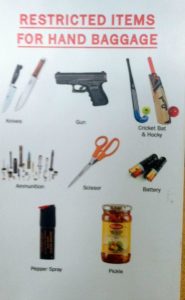 The Federal Aviation Administration (FAA) has been in existence since 1958 and was responsible for civil aviation safety until 2002. It is still responsible for the overall safety and efficiency of the aerospace system, including space travel.
The Federal Aviation Administration (FAA) has been in existence since 1958 and was responsible for civil aviation safety until 2002. It is still responsible for the overall safety and efficiency of the aerospace system, including space travel.
In the 1960’s there was a spate of aircraft hijackings around the world, and laws were passed in the USA making it illegal to interfere with an active flight crew member – and especially the pilot – or to carry dangerous weapons on board. Onboard and on-ground armed safety marshals were appointed by the FAA.
The TSA (Transportation Security Administration) was set up in the USA following the 9/11 attacks in New York, and it took over the responsibility for passenger and airport security. New rules were developed to protect everyone from potential or real threats to their safety.
There are similar bodies in other countries, and it’s a good idea to check their rules if you are traveling internationally. Not all rules are about safety – some are about environmental threats if you bring food, wood, animals, etc from one country to another. So, you may be allowed to take food onto the plane to eat along the way, but you might be in trouble when you reach your destination.
Which items are prohibited and what am I allowed to take on a plane?
It’s useful to distinguish between items that are banned altogether – that is, don’t bring them to the airport! – those that may not be in your carry-on luggage but are allowed in your checked luggage, and those that have quantity or other restrictions.
List of Banned items on Flights:
On this list are:
 Any kind of explosive or incendiary material. We think of gunpowder, ammunition or dynamite here, but it also includes fireworks and even replicas of explosives.
Any kind of explosive or incendiary material. We think of gunpowder, ammunition or dynamite here, but it also includes fireworks and even replicas of explosives.- Flammable items. This includes gasoline, lighter fluids, cooking fuels, paint and paint thinners.
- Gases and pressurized containers. Don’t bring aerosols larger than 3,4 oz (100ml), self-inflating items, oxygen tanks for your scuba gear, mace or pepper spray.
- Matches. You may carry on a single box of safety matches, but no other matches are allowed. Don’t bring a torch lighter.
- Chemicals. This includes bleach, fertilizers, pool and spa chemicals, tear gas and the like.
- Corrosives. Included here are wet cell batteries, acids, mercury, etc
- Poisons. All poisons are on the banned list.
- Magnetic materials, such as you might find in loudspeakers and laboratory equipment, are banned.
- Infectious materials. This includes bacterial cultures and viruses and some medical specimens.
- Radioactive material. If you have an implanted medical device, make sure you carry the special card that your doctor has given you and declare it at the security checkpoint
- Marijuana (cannabis) either for personal use or to import into the USA, is not allowed.
Items allowed in checked luggage but not as carry-on
 Sports equipment such as sticks or clubs, ski poles, pool cues, are allowed
Sports equipment such as sticks or clubs, ski poles, pool cues, are allowed- There are some specific rules if you want to carry firearms (including replicas and parts) and ammunition. Some can be packed into your checked bags, but must be unloaded, and secured in a locked case.
- Paintball guns must have the compressed air cylinder removed.
- Sharp instruments must be packed in such a way that they will not injure an airline official doing a search of your bag. This includes knives, blades, scissors, tweezers, ice picks, syringes, etc.
- Remember to take your pocket knife out of your pocket, or you might have it confiscated as you go through the screening gate.
- Tools, including power tools and larger hand tools, are allowed. Items like step ladders should be checked in separately.
- You can have up to 5,5 pounds (2,5kg) of dry ice (frozen carbon dioxide) to pack around perishables, but make sure that the package is vented.
- Regulations since March 2017 require that laptop computers and electronic devices larger than a cell phone must be checked in.
Items allowed in your carry-on baggage
Some of these items may seem hazardous, but you are allowed to carry them in the passenger cabin:
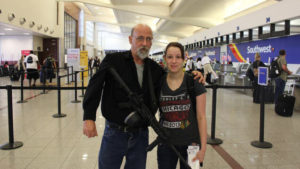 Batteries for personal items such as computers, cameras, phones, games, hearing aids and even drones are allowed. You may also carry some spare batteries. Batteries for wheelchairs or special scooters must be declared at the security checkpoint.
Batteries for personal items such as computers, cameras, phones, games, hearing aids and even drones are allowed. You may also carry some spare batteries. Batteries for wheelchairs or special scooters must be declared at the security checkpoint.- Spare rechargeable batteries have some restrictions based on their capacity. Make sure that you have bought batteries from a reputable source, as they can explode.
- Items like cigarettes and electronic cigarettes and vaping devices can be carried on but you can’t use them on board and can only use them in designated smoking areas at the airport.
- You can carry small hand tools if they are less than seven inches (18 cm) in length and if they don’t have sharp cutting edges, and scissors with a cutting edge less than four inches (10 cm)
- You may have 1 box of safety matches and common cigarette lighters.
Items with restrictions by TSA
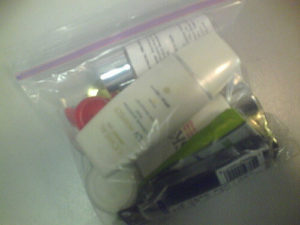 The most important rule is the TSA 3-1-1 rule for liquids, (including water or juice for drinking on the plane), gels, pastes, creams, and aerosols:
The most important rule is the TSA 3-1-1 rule for liquids, (including water or juice for drinking on the plane), gels, pastes, creams, and aerosols:
- 3 = 3-ounce containers or smaller. This is the maximum quantity allowed per container.
- 1 = one quart-sized clear plastic bag. All containers must fit comfortably into this bag.
- 1 = one such bag per passenger.
There are also rules about liquids and gels bought in duty-free shops or after you have been through the security check. You can carry these items in the cabin if you are on the last leg of your journey. If you must pass a security check to get onto another flight, you will have to check these items in.
Any food that you take onto a plane must go through the X-ray screening. It must be wrapped or in a container – please don’t walk on with a half-eaten burger in your hand! You can get more information about the do’s and don’ts of traveling with the food here.
So …. I hope that you now know what to do and that your trip is hassle free!
Check online or with the TSA official at the airport if you are not sure about any item you are carrying. If you are traveling internationally, check beforehand so that you don’t have to abandon your possessions at the checkpoint.
Written By Kate Mark

Kate is a mid-lifer who quit a growing corporate career to reawaken her passions and her lifelong dream of traveling the world.
